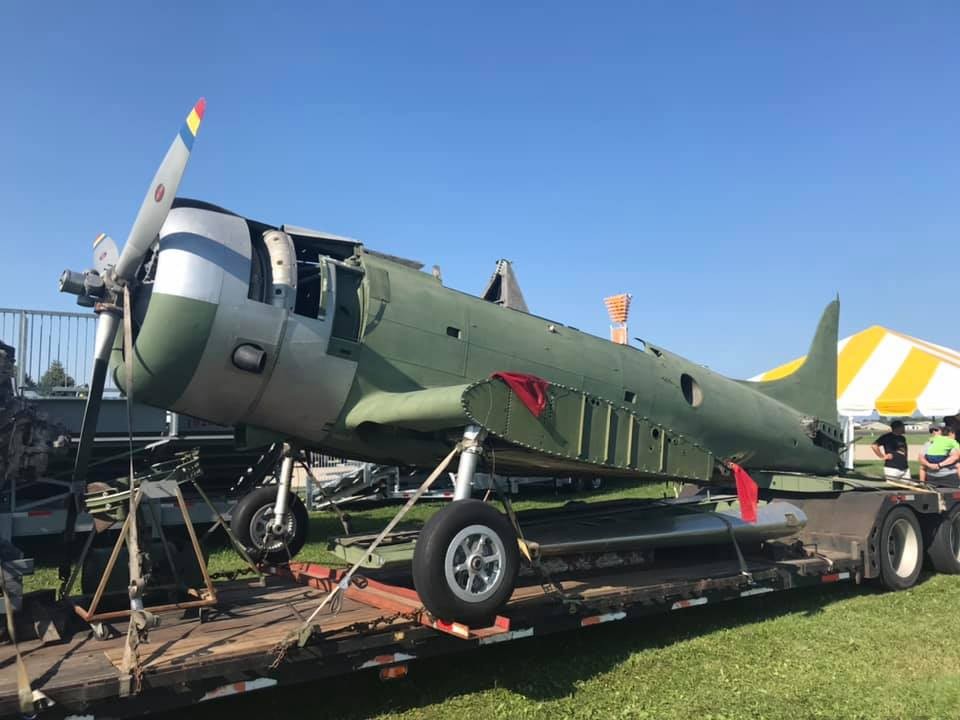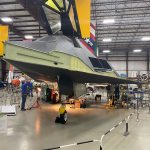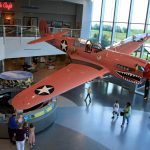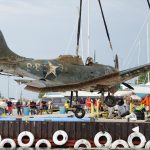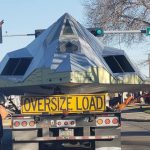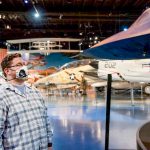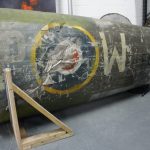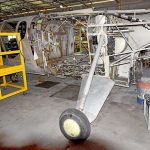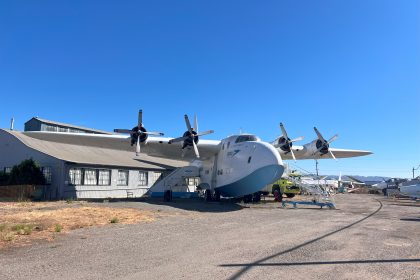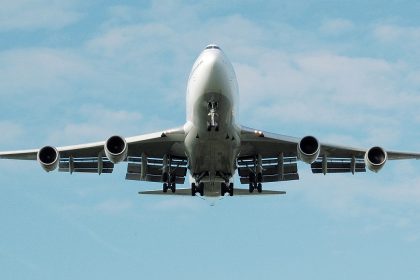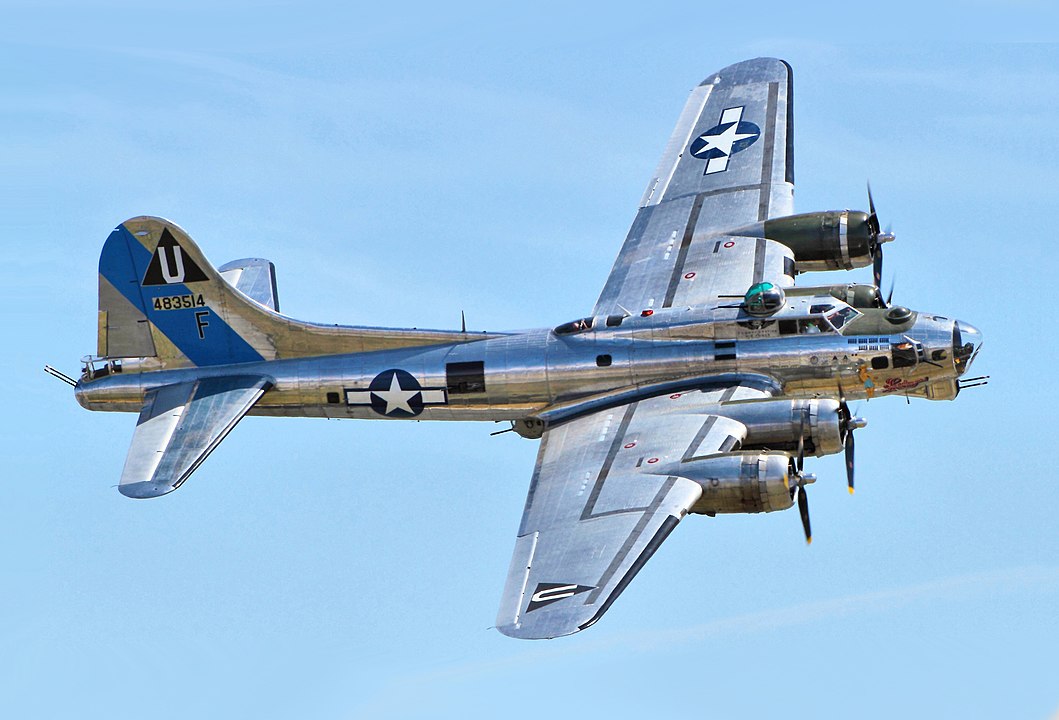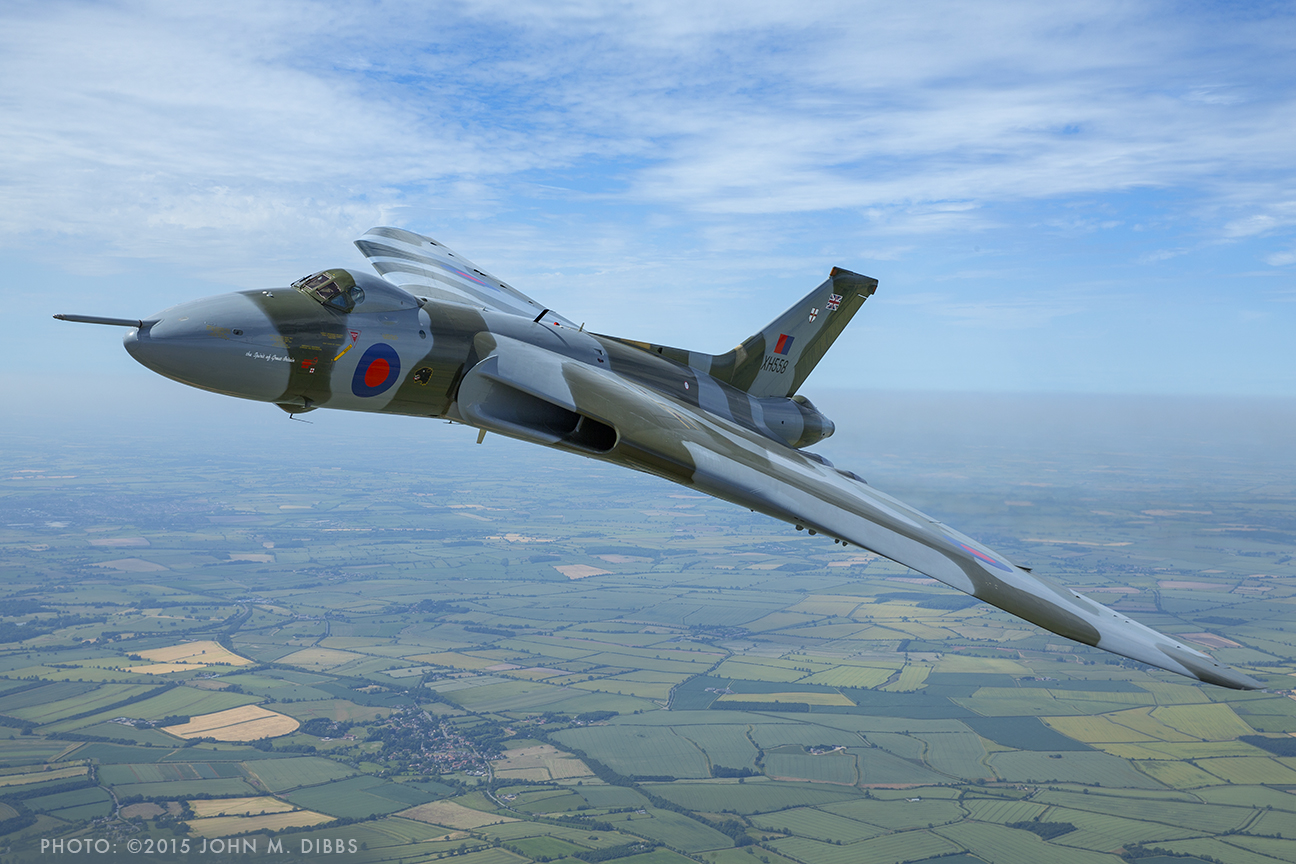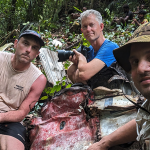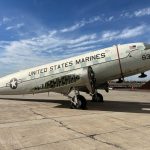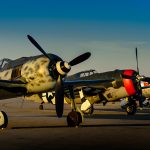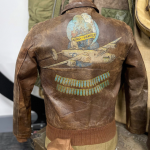Douglas Dauntless SBD-1 BuNo. 1612, the sole surviving example of its variant, was expected to arrive at the Air Zoo’s Flight Discovery Center in Kalamazoo, Michigan today, August 2nd, 2021. The museum’s highly respected restoration team will complete the full restoration of this historic aircraft, making it the third example of the breed which they have tackled thus far and the fourth aircraft recovered from Lake Michigan which they have worked on.
Douglas completed this particular Dauntless in the summer of 1940 at their plant in El Segundo, California. She was just the 17th production model built. Douglas delivered her to the U.S. Marine Corps on September 16th, 1940 and she soon joined Marine Scout Bombing Squadron 132 (VMSB-132) at Marine Corps Air Station (MCAS) Quantico, in Quantico, Virginia. The Dauntless stayed in Virginia for the next eighteen months before flying across the country in March, 1942 to join VMSB-142 at Camp Kearney (presently the site of MCAS Miramar) just north of San Diego, California. That fall, VMSB-142 upgraded to the SBD-4, deploying operationally to the Pacific. BuNo. 1612, being essentially obsolete from a combat perspective by that point, stayed Stateside in a training role, moving on to the Carrier Qualification Training Unit (CQTU) at what was then known as Naval Reserve Air Base (NRAB) Chicago in Glenview, Illinois. Here student pilots gained experience in carrier operations, practicing their art in combat-redundant airframes like the SBD-1.
But given their inexperience, many trainee aviators ran into problems, sometimes fatally. And such was the case, tragically, when Ensign Herbert Welton McMinn, USNR of Gouldbush, Texas ditched SBD-1 BuNo.1612 in Lake Michigan during a training mission on November 23, 1942. The Dauntless, one of thirty eight SBDs lost in Lake Michigan, remained where it fell for the next half century before its rediscovery. Sadly, however, no trace of Ensign Welton’s body was never found.
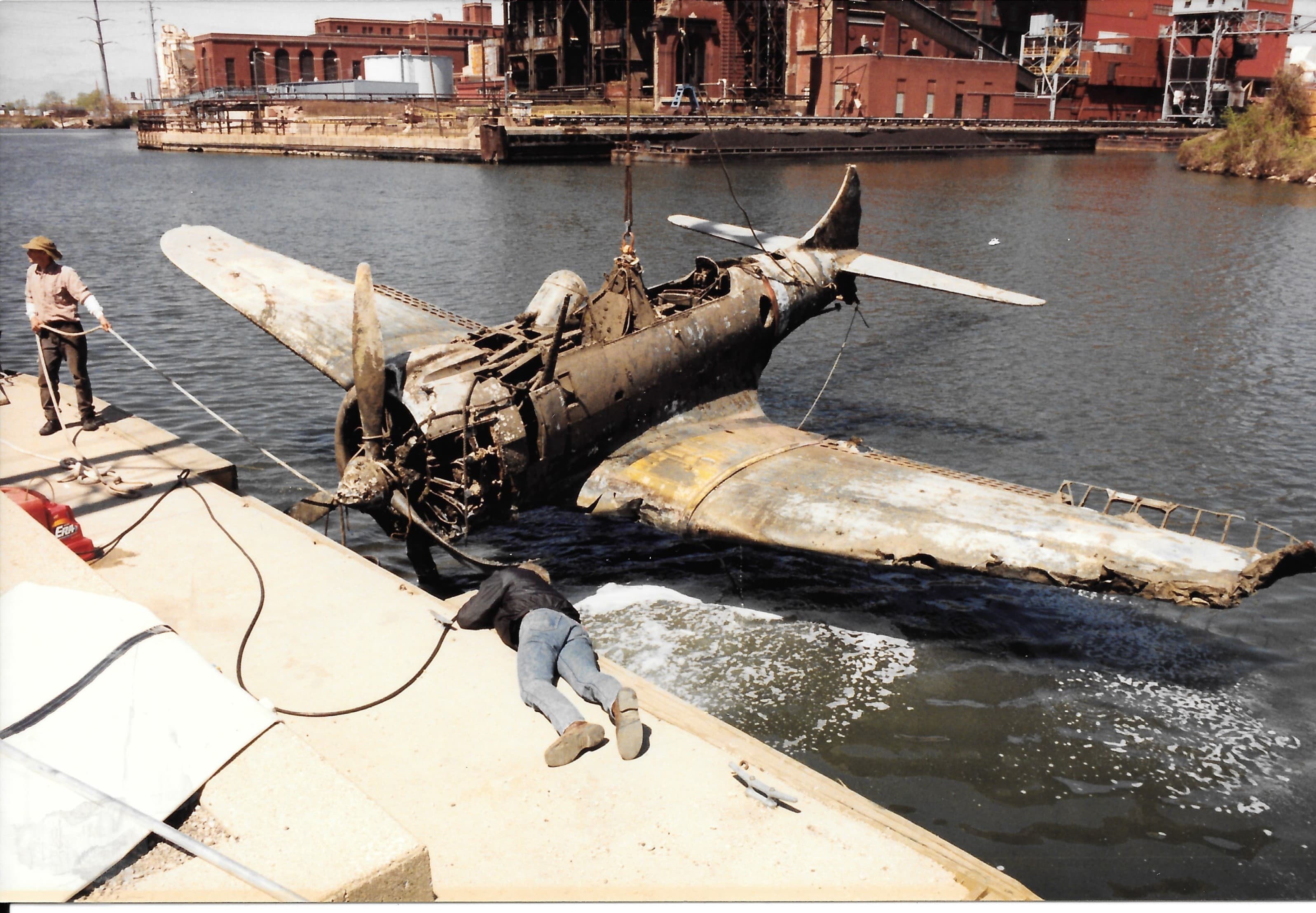
While A&T Recovery raised the well-preserved SBD from the bottom of Lake Michigan in January 1994, the SBD has experienced an itinerant existence in the ensuing three decades, bouncing between a number of different museums in search of a proper home for refurbishment. Indeed, work didn’t fully commence on her restoration until she moved to the Flying Leatherneck Aviation Museum in 2012. While that museum’s volunteers made significant progress in their efforts, unfortunately, their institution closed permanently on March 28th, 2021. The National Naval Aviation Museum (NNAM), which owns the airframe, had to then find a new home for her, and a reputable team (preferably with knowledge on type) to wrap up the restoration. Given the Air Zoo’s already considerable experience in restoring SBDs, with one example completed and another well under way, it made sense that the NNAM would engage them with this important project. So this July, with an agreement in hand, the Navy arranged for the SBD to make the long journey by road from San Diego to Kalamazoo. However, before she completed this journey, the SBD, along with representatives from the Air Zoo, A&T Recovery, the U.S. Navy, and descendants of the McMinn family, made a week-long stop at EAA AirVenture Oshkosh 2021 in Oshkosh, Wisconsin, where their presence generated great excitement amongst the show’s visitors.
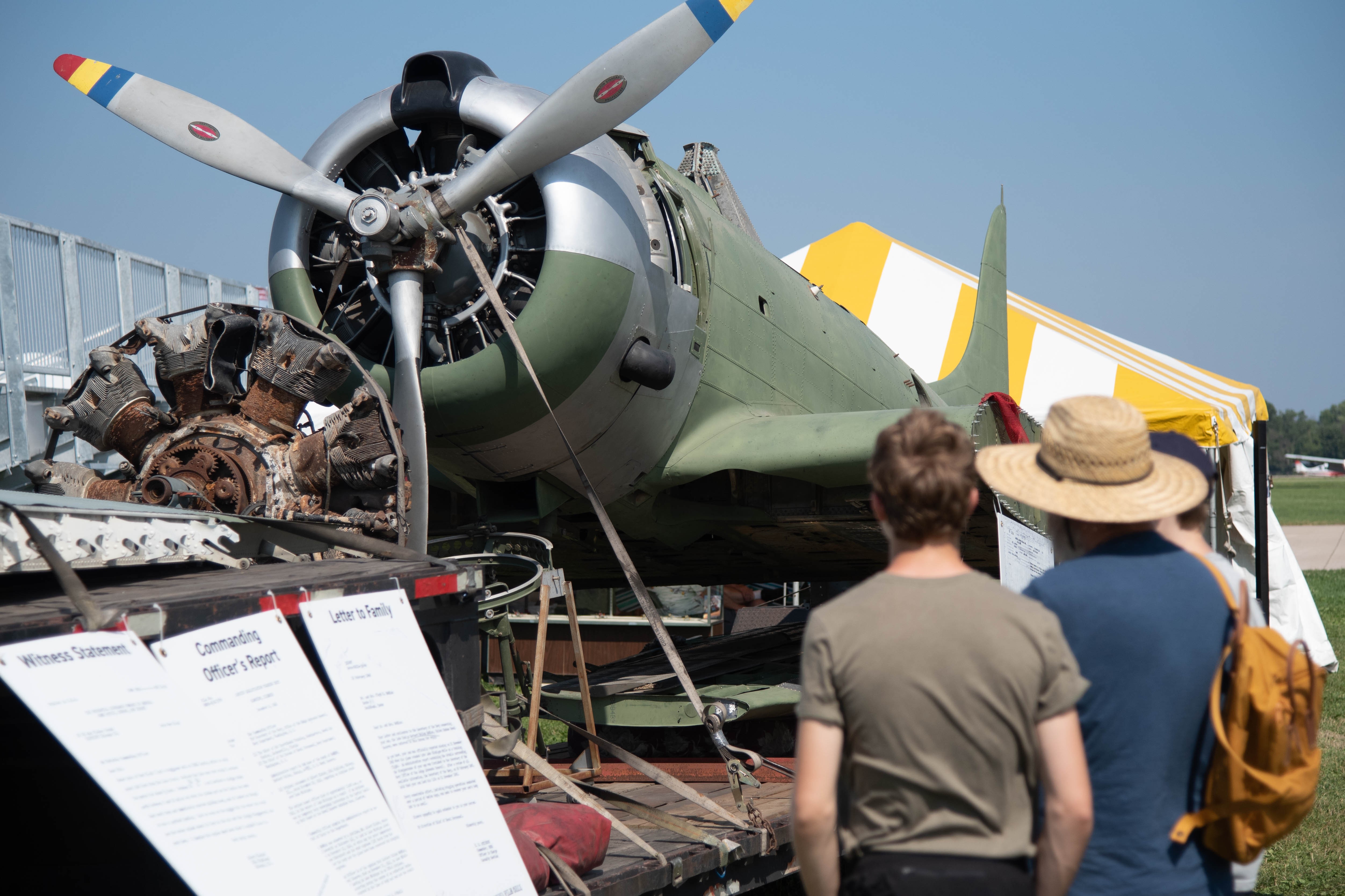
With the conclusion of AirVenture Oshkosh this past Sunday, the SBD then began the final leg of her journey to Kalamazoo. She was due to arrive today, August 2nd, at the Air Zoo’s Flight Discovery Center, where the museum’s dedicated restoration team can soon begin the completion of this historic aircraft’s resurrection.
Remarking on these developments, Air Zoo President & CEO, Troy Thrash stated, “This is truly exhilarating! The timing is perfect as we prepare to say goodbye to one of our most beloved restoration projects, the SBD-2P (Bu. No. 2173) heading back home to Pearl Harbor in November. The years of experience, knowledge and passion is evident and embedded in every project this team takes on.” Thrash then added, “How fortunate are we to have this opportunity to work on these historic planes? Restoring history and honor, not only to the aircraft, but to the families of the pilots that flew them and all who prepared them to breech the sky. And Herbert McMinn, who lost his life in the crash into the lake, certainly deserves that.”
And this couldn’t be more true… While Ensign McMinn has no known grave, his name will be forever remembered and his life-story retold in connection with his SBD when it goes on display following restoration’s end. It’s hard to imagine a more fitting testament to his courage or sacrifice, and to all the others from the Greatest Generation who lost their lives while training to defend the nation.
The restoration will likely take several years to complete, and the museum estimates it will need between $350,000-$500,000 to do the work. Therefore, the Air Zoo has launched a fundraising campaign to help cover the anticipated materials and operational support necessary for the team, which is mostly comprised of volunteers. As already noted, this aircraft will replace the nearly completed SBD-2P presently in the restoration shop when it returns to Pearl Harbor, Hawaii this fall to become part of the Pearl Harbor Aviation Museum. That museum is planning a formal dedication for the SBD-2P on December 7th as part of the National Pearl Harbor Remembrance Day ceremonies, marking the 80th Anniversary of the Japanese attack on Pearl Harbor.
Follow 1612’s journey and restoration on Facebook, or join the Air Zoo’s Restoration Group.
About the Air Zoo
Located at 6151 Portage Rd., Portage, MI 49002, the Air Zoo is a Smithsonian-affiliated aerospace & science experience with over 100 rare air & space craft, inspiring interactive exhibits, indoor amusement park rides, full-motion flight simulators, hands-on science-based education programs, and more. The Air Zoo is a not-for-profit organization and is open 360+ days per year.
For hours, tickets, safety policies and procedures as well as temporarily altered experiences due to COVID-19, visit airzoo.org/plan-your-visit.







